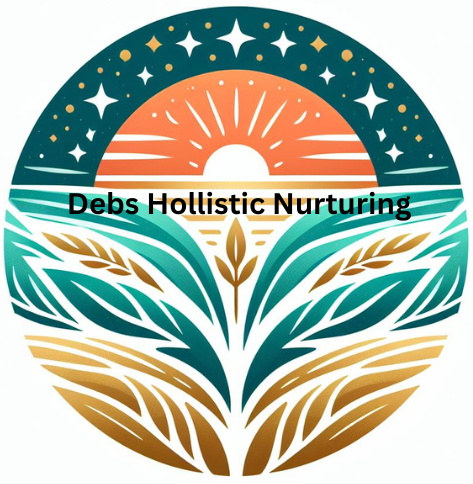 Balancing ancient wisdom with newer approaches offers a unique wellness path when discussing health. Traditional medicine has deep roots in history, often reflecting a community’s cultural practices. Think of it as the age-old wisdom passed down through generations, including systems like Traditional Chinese Medicine (TCM) and Ayurveda.
Balancing ancient wisdom with newer approaches offers a unique wellness path when discussing health. Traditional medicine has deep roots in history, often reflecting a community’s cultural practices. Think of it as the age-old wisdom passed down through generations, including systems like Traditional Chinese Medicine (TCM) and Ayurveda.
Traditional medicine focuses on the body’s inherent ability to heal itself. This philosophy is central to practices like acupuncture, herbal remedies, and therapeutic exercises. The principle is maintaining balance within the body, which directly impacts overall health.
Conversely, holistic medicine views health as more than just the absence of illness. It takes into account physical, emotional, spiritual, and social well-being. This approach covers naturopathy, homeopathy, and other alternative therapies, focusing on treating the whole person rather than just symptoms.
What makes integrative medicine stand out is how these philosophies work together. Imagine combining acupuncture with a modern stress management program. This combination might address not only physical pain but also underlying stress that could be contributing. It’s about merging the best of both worlds to offer patients comprehensive care.
One of the most fascinating aspects of integrative medicine is seeing it in action through real-life case studies. There are countless examples of traditional and holistic methods being successfully woven together. Consider treatment plans where patients undergo surgery (a product of modern medicine) and then follow up with natural therapies like yoga and dietary adjustments to support recovery.
Experts in this field are often vocal champions of integrative medicine, highlighting its potential to offer more varied treatment options. They see the value in a medical approach that doesn’t limit itself to one philosophy but instead uses all available tools to achieve the best outcomes. This is healthcare evolving to meet the needs of everyone, not just the disease.
Benefits and Challenges of Integrative Medicine
 There’s a lot to love about integrative medicine. It offers a more well-rounded approach to healthcare, aiming to cure diseases and boost overall wellness. One major perk is how it personalizes treatment. Instead of a one-size-fits-all solution, you get a plan tailored to your needs.
There’s a lot to love about integrative medicine. It offers a more well-rounded approach to healthcare, aiming to cure diseases and boost overall wellness. One major perk is how it personalizes treatment. Instead of a one-size-fits-all solution, you get a plan tailored to your needs.
Many patients report feeling more engaged in their treatment when both traditional and holistic methods are used. For example, if you’re dealing with chronic pain, a blend of physical therapy, acupuncture, and lifestyle changes like diet adjustments could alleviate symptoms and improve your quality of life. It’s about empowering patients to participate actively in their health journey.
Of course, with benefits come challenges. One big hurdle is navigating the regulatory landscape. Traditional and holistic medicines often operate under different rules, making it tricky to combine them seamlessly. Healthcare providers must adhere to current regulations to ensure safe and legal practice.
Education is another significant barrier. Many healthcare practitioners are well-versed in traditional methods but might lack training in holistic practices. Bridging this gap requires continuous learning and a willingness to explore different treatment modalities. More schools and institutions recognize this need and offer comprehensive programs covering both areas.
Managing expectations is a big part of the integrative medicine experience for patients. Some folks might expect immediate results, not realizing that holistic methods often take time to show effects. Setting realistic goals and maintaining open communication between patients and providers can make a difference.
Healthcare professionals play a crucial role in this integrative approach. It’s their job to guide patients through the maze of treatment options, helping them find what works best for their situation. This involves not just prescribing treatments but also educating patients on the benefits and limitations of each option. This teamwork can lead to improved health outcomes and patient satisfaction.
Implementing Integrative Medicine in Modern Healthcare
Creating an integrative healthcare environment starts with being open-minded and willing to embrace diverse treatment paths. Developing a culture that values traditional practices and innovative holistic approaches is essential. This means institutions need policies that support a blend of these methods.
Successful integration hinges on a few critical practices. First, healthcare providers need robust training programs covering traditional and holistic medicine. This ensures they are well-equipped to offer comprehensive care. Also, fostering collaboration among practitioners can lead to creative and effective treatment plans. When specialists from different fields work together, patients benefit from their combined expertise.
Incorporating new technologies can also elevate integrative medicine. Advanced diagnostic tools, telemedicine, and electronic health records (EHRs) streamline patient care, making it easier for practitioners to access and share information. This tech bridge helps create a cohesive treatment strategy tailored for each patient.
Education doesn’t stop with providers. Patients, too, need resources that help them understand the benefits and limitations of integrative approaches. Workshops, informational materials, and one-on-one consultations can demystify the process, encouraging more people to consider integrative methods viable options.
Looking ahead, the future of integrative medicine is promising. There’s growing awareness around the importance of treating the whole person, not just the symptoms. As the healthcare landscape evolves, more emphasis will be placed on approaches that combine the best of both worlds, providing holistic and traditional options to meet diverse patient needs.
